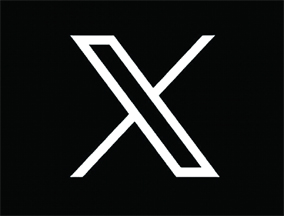Elon Musk may want to send “tweet” back to the birds, but the ubiquitous term for posting on the site he now calls X is here to stay — at least for now. For one, the word is still plastered all over the site formerly known as Twitter. Write a post, you still need to press a blue button that says “tweet” to publish it. To repost it, you still tap “retweet.” But it’s more than that. With “tweets,” Twitter accomplished in just a few years something few companies have done in a lifetime: It became a verb and implanted itself into the lexicon of America and the world. Upending that takes more than a top-down declaration, even if it is from the owner of Twitter-turned-X, who also happens to be one of the world’s richest men.
“Language has always come from the people that use it on a day-to-day basis. And it can’t be controlled, it can’t created, it can’t be morphed. You don’t get to decide it,” said Nick Bilton, the author of “Hatching Twitter: A True Story of Money, Power, Friendship, and Betrayal” about Twitter’s origins.
Twitter didn’t start out as Twitter. It was “twttr” — without vowels, which was the trend in 2006 when the platform launched and SMS texting was wildly popular. The iPhone only came out in 2007.
Twitter co-founder Evan Williams “went one day and purchased the vowels, two vowels for essentially USD 7,500 each,” when he bought the URL for twitter.com from a bird enthusiast, Bilton said.
At the beginning, people didn’t “tweet” — it was “I’m going to twitter this,” Bilton recalled.
But “twittered” doesn’t roll off the tongue and “tweet” soon took over, first in the Twitter office, then San Francisco, then everywhere.
We’ve been tweeting for well over a decade. World leaders, celebrities and athletes, dissidents in repressive regimes, propaganda trolls, sex workers and religious icons, meme queens and actual queens.
Former president Donald Trump’s incendiary use of the bird app quickly punted “tweet” into near-constant headlines during his presidency. People who never signed up for Twitter knew what the word meant.
For now, we still tweet, retweet and quote tweet, and sometimes — perhaps not often enough — delete tweets.
News sites embed tweets in their stories and TV programs scroll them. No other social network has a word for posting that’s entered the vernacular like “tweet” — though Google did the same for “googling.”
The Oxford English Dictionary added “tweet” in 2011. Merriam-Webster followed in 2013. The Associated Press Stylebook entered it in 2010.
“Getting into the dictionary is an indication that people are already using it,” said Jack Lynch, a Rutgers University English professor who studies the history of language.
“Dictionaries are usually pretty tentative or cautious about letting new words in, especially for new phenomena, because they don’t want things to be just a flash in the pan.”
As Twitter grew into a global communications platform and struggled with misinformation, trolls and hate speech, its friendly brand image remained.
The blue bird icon evokes a smile, like the Amazon up-turned-arrow smile — in contrast to the X that Musk has imposed. Source: ANI
Musk wants to turn tweets into ‘X’s’, but changing language is not so simple
